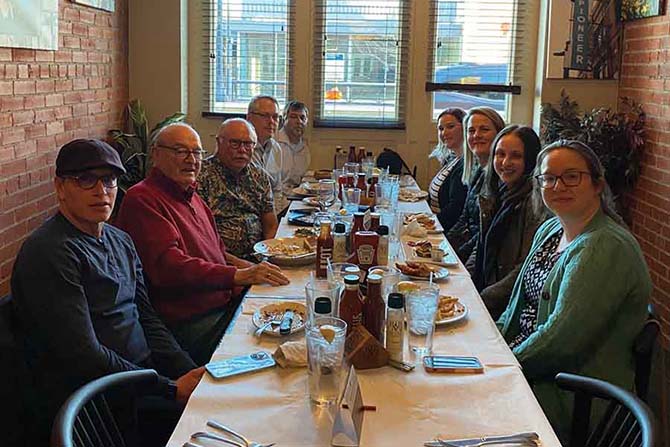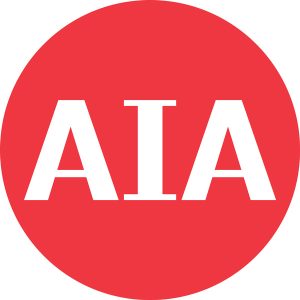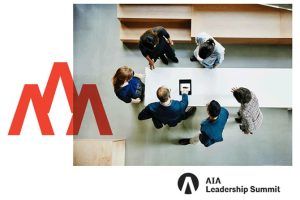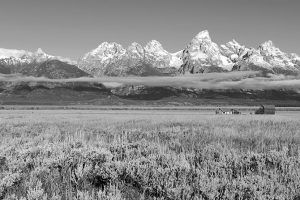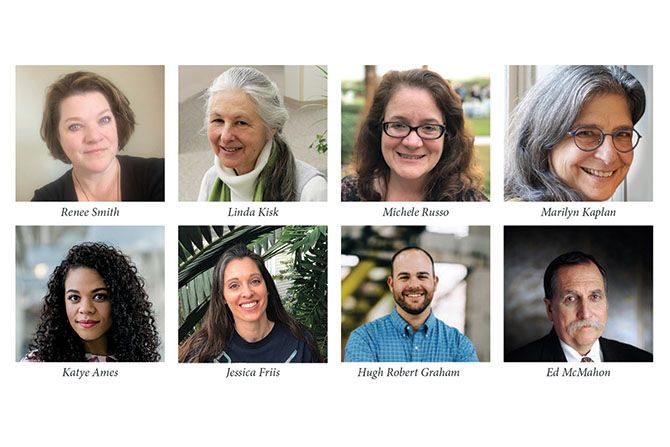
Incorporating the theme of the 2022 conference: Optimizing Assets, the AIA Wyoming Spring Conference in Cheyenne began on Thursday afternoon, April 7, with a tour of the recently completed Wyoming State Capitol Renovation. Participants received two CEUs provided by expert guidance from Suzanne Norton, AIA. Suzanne shepherded the project from its inception and currently serves as the Division Administrator of Construction Management Wyoming State Construction Department. Thursday evening offered additional CEUs with an AchiCranium event facilitated by the Membership Development Committee. We engaged architects, emerging professionals, AIA Wyoming membership, and students to employ their drawing skills, communication skills, exam readiness and knowledge of architectural precedents. Thank you to Winters Griffith Architects for hosting the event.
The main session began Friday morning with a welcome from AIA WY’s chapter president, Lewis Matthew Miller, AIA and then commenced with the first presentation following the conference’s theme of taking maximum advantage of existing built assets. Marilyn Kaplan, a fellow in the Association for Preservation Technology, provided a stimulating virtual presentation highlighting her experience and expertise in addressing the technical and code-related challenges encountered in historic preservation.
Michele Russo, AIA’s Managing Director of Research and Practice, presented data on current economic trends impacting practitioners and components. Using current trends in the building industry and associated areas, she provided valuable information about what various indicators suggest for the profession in the coming months.
After a break to visit exhibitor booths in the atrium of the Capitol, a chapter business meeting included reports on the activities of the various chapter standing committees and updates on AIA Wyoming’s participation in regional and national events, as well as details of
AIA’s affairs.
After time to visit with fellow members and exhibitors over lunch, the afternoon sessions began with an in-person presentation by Jessica Friis documenting her extensive research and current involvement with the High Plains Arboretum in Cheyenne. The title of her talk, Connecting Science and Environmental Design, described the history and changing mission of this fascinating facility west of Cheyenne and connected the role of design and scientific research.
Following a refreshment break and further opportunity to visit exhibits, a discussion provided insights around the topic of optimizing community assets from a panel of individuals with a wide range of expertise. Moderated by Senator Stephan Pappas, AIA Emeritus, the panel brought experiences and strategies from a diversity of viewpoints that centered on how community assets can be leveraged through multi-disciplinary collaboration. Specific examples of challenges and successes from panel members gave real-world relevance to the presentation.
The day’s final presentation by keynote speaker Ed McMahon of the Urban Land Institute incorporated the conference theme in a thought-provoking session on asset-based economic development. Using multiple examples and data sources, McMahon’s vast experience in preservation, urban planning and economics gave relevance and contemporary insight into challenges faced by design professionals. His fast-paced presentation gave conference participants ample food for contemplation and practical application.
The conference concluded on Saturday, April 9, with three on-site tours of recently completed projects. Chapter members Senator Stephan Pappas, AIA Emeritus; Jamie Winters, AIA and Lyle Murtha, AIA, guided attendees through their respective projects: Carey Junior High School Replacement Project, Judge Joseph M. Carey City Center, and the Barn Loft.
We thank our participating industry partners and our conference planning team: Senator Stephan Pappas, AIA Emeritus; Jim Rose, AIA Emeritus; Ansley Mouw, Associate AIA; Ellen Martin, Associate AIA; Suzanne Norton, AIA; and Susan Menghini, Executive Director.




